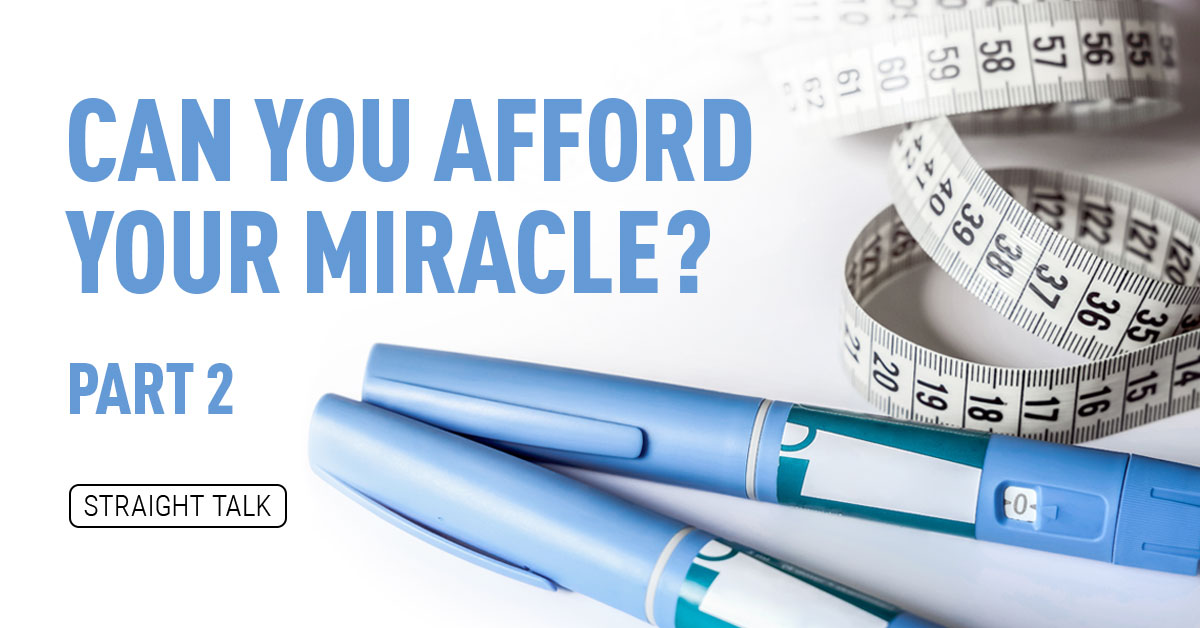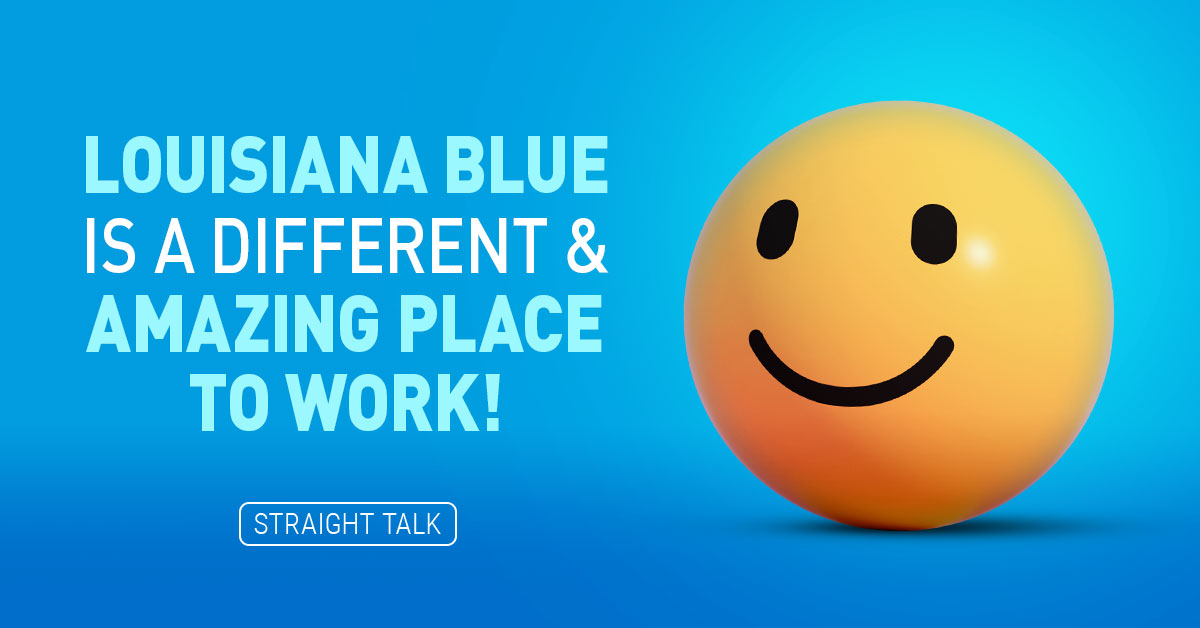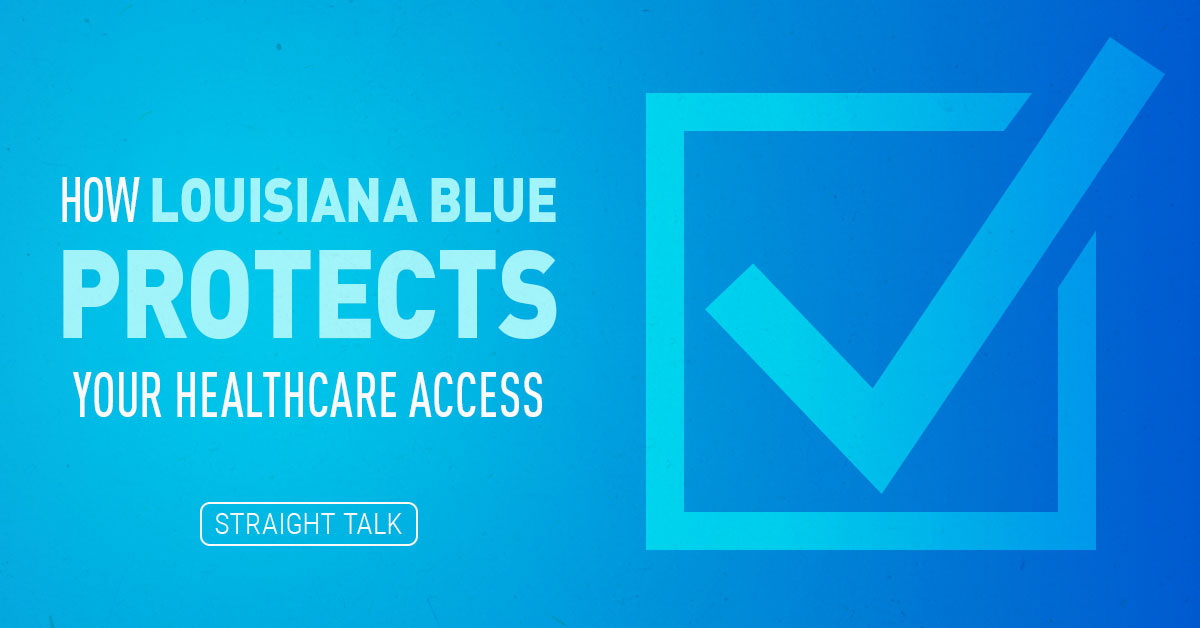I’m a big person.
Big, that is, in body. At 62 years old, I’m about 6 feet tall and weigh around 290 lbs. In BMI terms, around 40. That’s obese, morbidly obese, dangerously obese, you name it.
While I don’t really “battle my weight” like some folks do, I more or less have surrendered to it over the past four or five years. To be fair, I know how to lose the weight, I know how to keep it off, and I’ve done it before. But the lifestyle changes I would have to cement in place to make that happen are not easily attainable or attractive to me at all. So I don’t.
My Maw-Maw often accused me of being hard-headed. Fair. But at this point in my life, I try to listen to my doctor and do everything he says, take all the meds he recommends, and keep my blood pressure, cholesterol levels, blood glucose and the like within the normal ranges.
So far, so good.
Twenty years ago, a doctor looked me in the eye and proclaimed, “You have metabolic syndrome! Sort of like pre-diabetes…you need to lose weight and take this Metformin to stop from becoming a diabetic.” I’ve been on the Metformin for almost 20 years, and since then, I’ve never had an A1C – that’s the measure of your average blood glucose levels – higher than 6%. A good range for someone my age, height/weight and with my health status. Some days I think I’m my doctor’s worst nightmare: a guy who is just not motivated to lose weight but hasn’t suffered too much for his choices.
Yet.
Here Come the GLP-1s
I’m certainly not alone. About 38% of Louisianians have a BMI of 30 or above and are considered obese and at risk of significant health problems as they age. That’s millions of us. Wouldn’t it be great if somebody could invent something that you could take, a pill or an occasional injection perhaps, that would get that weight off WITHOUT us having to make all those lifestyle changes? Hmmm?
THAT would be a miracle. And in a way, that miracle has already happened. We now have, in common use in the marketplace, drugs that are called Glucagon-Like Peptide agonists, or GLP-1s for short. You’ve probably heard of them. They go by names like Ozempic, Mounjaro, Wegovy, Rybelsus or Zepbound. These drugs are injected once a week, with a very tiny needle, and they do two amazing things.
- For someone who is a Type-2 diabetic, they make insulin production more efficient and get your body to use more of what is produced. As a result, Type-2 diabetics on these drugs quite often experience the best glucose control they’ve ever had. They stay “in the green” on their glucose meters almost all the time. In fact, many diabetics can take a GLP-1 drug and STOP taking other medications like insulin. For a diabetic, these drugs ARE a miracle.
- In addition to wonderful glucose control, these drugs ALSO suppress the hormones your brain creates that make you hungry, and the drug slows your digestive system down so much that you eat much less and lose weight. It’s not unusual for someone on these drugs to lose 10, 15, even 20% of their body weight (sometimes more!). And all from a very tiny shot once a week. This effect has led to these drugs moving beyond use for treating diabetic patients – people are now taking them to treat obesity and lose weight.
Amazing!
But there are always downsides. First, I want to make one thing very clear – At no time should ANYONE take any GLP-1 product without the strict oversight of their physician. These medications have significant possible side effects, and you should be closely monitored by a doctor if you are taking them.
The other downside to GLP-1s is …
The Staggering Cost of This Miracle
On average, GLP-1 drugs will cost you, or your insurance company, around $1,000 per month. Sometimes a little less, sometimes a little more. Not all of these types of drugs are approved to treat non-diabetic weight loss.
About a year ago, I was presented with a dilemma, which led me to do months of research and ultimately build a sophisticated model that employers can use to forecast how much it would cost them to cover these types drugs for Type 2 diabetics, or for non-diabetics to use for obesity only.
I quickly learned, after reading more than 20 studies by national organizations on obesity, diabetes and weight loss, that I knew very little about the real world of obesity, diabetes and weight loss. The critical studies I used in my research are linked at the end of this article, if you want to check them out for yourself. I’ve been writing about the significant costs of some prescription drugs for years now.
My colleagues and I did extensive modeling on health insurance covering GLP-1 drugs for Type 2 diabetes and looked at the overall medical costs of Type 2 diabetics for employers and the healthcare system. It became quickly apparent that buying those drugs for that population was well worth the cost. In fact, I immediately recommended that Blue Cross and Blue Shield of Louisiana cover GLP-1s for Type 2 diabetes, and we do. In all our group and individual products, an eligible member who has Type 2 diabetes will have insurance coverage for Ozempic and other GLP-1 drugs.
But Mike, what about the poor people who aren’t diabetic but just need to lose weight?
Like me, you mean? That’s a much more nuanced and complex calculation. In my research, through all of these very recent national studies including Census data, I learned some interesting facts that really busted some myths for me. Let me share some of these hard realities with you.
Myth #1: The cost of eradicating obesity would easily cover the costs of these drugs and ultimately, there would be savings to the health plan or employer.
Every single national study we researched showed a different methodology for computing the healthcare and societal costs of treating non-diabetic obesity in large populations. But in all the studies, the incremental healthcare costs of non-diabetic obese patients ranged from $149 to a maximum of $254 in extra costs per person per month. And to achieve the $254 incremental cost, that particular study limited participation to people over age 55 with BMIs over 35. So, the participant pool was essentially larger, older folks who typically have more health risks than younger people. And their overall healthcare costs today still only reached about $254 a month above the cost for a same-age person without obesity. And that’s considering every other health condition EXCEPT diabetes.
This means, in its simplest form, that if your employer decided to invest in covering GLP-1s for non-diabetic obese members of your health plan, it would be applying around $1,000 per member per month to resolve a maximum $254 per-member per-month health cost. Not a financial decision you would make, I’m betting. Certainly I would not.
Myth # 2: Obese people are more likely to get diabetes and other serious health problems because they’re obese, so shouldn’t we intervene now?
While we know that some 85% of the people who are diagnosed as Type 2 diabetics are obese at their time of diagnosis, I needed to know how many obese people are actually BECOMING diabetic on an annual basis. The answer surprised me and continues to surprise everyone to whom I show it, but the data is irrefutable. It was gleaned directly from the National Institutes of Health and the U.S. Census data, with backup stats from the American Diabetes Association.
Imagine I took a group of 1,000 NON-DIABETIC people, all of whom had BMIs higher than 30, and I put them in a nice hotel and let them live there for a year. I let them do what they want, exercise or not, but order anything off the menu for free for a solid year. When they walked in the door, NONE of them were diabetic.
How many will become diabetic during that year?
On average, the spread in the national research is 0.9 to 1.3% of the group will present with Type 2 diabetes after 12 months. That’s between 9 and 13 out of 1,000 obese people. To provide the 1,000 obese folks with GLP-1s for that year would cost at least $11 million. So, all a health plan has to do is invest $11 million to keep 13 people from becoming diabetic. You can see how quickly the math on this falls apart.
But Mike, WHY are these drugs so expensive? Surely the price will come down soon.
Currently, the demand for GLP-1s is far outstripping the drug companies’ ability to create them. As a result, the prices for these drugs INCREASED on Jan. 1 of this year by 4-6%. So no, prices are not going down.
In fact, the shortages are so bad at this point that people who can afford to buy the drugs out of pocket to help them with weight loss are grabbing up all the supply. And that leaves the Type 2 diabetics (who need the drugs to keep a long-term health condition under control) struggling to fill their prescriptions.
Another concern is how long a person needs to take these drugs to maintain their weight loss. For many people, taking these drugs is sort of a life sentence. When you start taking a GLP-1 for weight loss and you drop some pounds, if you STOP taking the drug without having made significant lifestyle changes, in most cases that weight will come right back. For those 1,000 people we put up in a hotel for a year, one year’s worth of GLP-1s was $11 million. To do that for, let’s say an average of 30-40 years per person would be $330 – $440 million. With that kind of long-term demand, the drug companies would be under no pressure to lower prices.
We can’t have a conversation about the price of GLP-1s without noting some global realities.
Drug manufacturer Novo Nordisk is selling Ozempic to the United Kingdom’s National Health Service for the equivalent of $240 a month. That means here in the U.S., we are paying 400% MORE. The other GLP-1 manufacturers have cut similar deals with Germany, Canada and France, leaving the U.S. holding the bag again and paying 300-500% MORE for the same drugs. Seems a bit unfair, right? If we could get GLP-1s here in the U.S. for $240/month, we’d be having a VERY different conversation about coverage for non-diabetic obese patients. But right now, we can’t.
The Straight Talk is, new drugs that tens of millions of Americans could benefit from are far overpriced here in the U.S. and often prescribed to or bought by people who would not benefit the most from them. At U.S. pricing, employers and health plans could not offer these drugs for non-diabetic obesity without very large rate increases. There is currently no appetite to pass on such rate increases to the insured masses.
- https://www.ncbi.nlm.nih.gov/pmc/articles/PMC5319814/
- https://diabetes.org/about-us/statistics/cost-diabetes
- https://www.cdc.gov/diabetes/library/spotlights/diabetes-facts-stats.html#:~:text=Key%20findings%20include%3A,t%20know%20they%20have%20it.
- https://www.hsph.harvard.edu/obesity-prevention-source/obesity-consequences/economic/
- https://www.ncbi.nlm.nih.gov/pmc/articles/PMC2891924/
- https://www.jmcp.org/doi/10.18553/jmcp.2021.20410
- https://pubmed.ncbi.nlm.nih.gov/33470881/#:~:text=RESULTS%3A%20Adults%20with%20obesity%20in,to%20233.6%25%20for%20class%203.
- https://milkeninstitute.org/sites/default/files/reports-pdf/Mi-Americas-Obesity-Crisis-WEB.pdf
- https://atm.amegroups.com/article/view/89415/html
- https://jamanetwork.com/journals/jamanetworkopen/fullarticle/2796491
- https://www.stlouisbariatrics.com/obesity/obesity-and-the-cost-of-diabetes/





I’ve been having Blue Cross for over 20 years now. I was obese and I had to pay out of my pocket to have weight loss surgery. I think this is very sad because I actually saved my insurance company alot of money because I’m totally off all the meds. However, I’m still overweight. I have to pay out of pocket for this medication that my insurance will not cover. My A1C only got to 6.4. They said it has to be 6.5 for me to be considered diabetic. Diabetes runs in my family and almost all of my family members have it. Not all of them are over weight. It is just in our genes. I really don’t care if Blue Cross ups my premium. I just with they would consider covering this. It would help so many people.
I rarely read this, but I have some anecdotal feedback for you:
1, I started out at 217#, 5″ 11″, 52 yo male. A1C 6.2
2, I started on Mounjaro which was covered by a discount card and I was paying $40/month.
3, Got down to 178#, A1C 5.3
3, Discount card expired and price was $1,200 per month cash.
4, Doctor may now have to LOWER my statin, my HBP medicine and eliminate my fenofibrate (all inexpensive drugs)
5, I started to gain weight, so I went back on it, paying almost $600/month from a local discount pharmacy.
6, This drug was a life changer for me. I feel great and every single number on by bloodwork analysis is in normal range.
7, Unfortunately, staying healthy costs me $600/month and I pay it out of pocket.
It would be nice if this was covered!
Chris and Nannette!
Thanks so much for reaching out! I share your story, and your pain on this. And I am thrilled with your progress.
I also hope if you are using these drugs you are making the lifestyle changes to keep your health status improving. Otherwise you’ll have to take them for a very long time to keep the weight off.
At this time, in the United States, the drug companies are charging us (and you) far too much for these drugs AND they are raising the prices on them as we write this. At the same time, they are charging 1/4 as much for the exact same drugs sold to the UK, Germany, and France to name a few countries.
Like you, I would benefit from insurance coverage of these drugs as well. We would be asking employers to absorb 15-25% rates increases just to provide 3 years of coverage for these drugs at modest uptake rates (think 20-25% of their obese populations). Then that increase would be shared to their employees and the non-obese populations as well.
Population-wide, the research simply does not justify covering an $1,000 a month drug to give the population a $200 benefit, which is the current differential when applied to non-diabetic obese folks, even including all their other comorbidities. And the old saw about obese people being “right on the verge of diabetes!” turns out to not be true as well. Around 1% of the obese present with Type 2 in a given year.
We are struggling with the right way to handle all this, and you can bet we are having these conversations every single day.
When the drug manufacturers become rational, and start bringing these drugs to market in America at something approaching the European models, we will be having a VERY different conversation right now.
But they are doing the opposite, they are RAISING the prices here in the US. Shameful.
Mike, why do the drug companies charge the United States so much more than other countries?
This might sound trite, but I assure you it is not: Because they can.
You see, two factors in other developed countries act to constrain drug prices that have no analogue here in the US.
In the countries that centrally manage healthcare costs (think UK National Health Service) committees with the power to choose NOT to buy a drug above a particular price act aggressively to keep their healthcare costs within a certain % of that nation’s GDP. Since their system is driven by tax revenue that is capped each year, the idea of paying Pharma whatever number they come up with for drugs is just not conceivable. And it works, after a fashion. For example, you can get Ozempic in the UK for 20% or less of what we have to pay for it here. BUT the UK approved formulary only has about 4,000 drugs on it, while your typical BCBSLA formulary has over 12,000 drugs on it.
The other factor we see operating in countries like Canada is more fundamental. In all but one of the “states” (provinces) in Canada, their national healthcare insurance system does not cover drugs at the pharmacy at all. That means every drug purchase does not get financed by a deep-pocketed 3rd party payer like we do here in the US, but has to be paid essentially cash by a consumer at a pharmacy. This means drug manufacturers must offer drugs at small fractions of what Medicaid, Medicare, or private insurance pays for them here in Canada to have a chance of selling any at all. Again this has the effect of limiting choice, a typical Canadian pharmacy might carry 3,000 drugs or so, compared to over 10,000 for the average pharmacy in the US.
There is an argument that the ridiculously high prices we pay for drugs here enables the manufacturers to charge so much less in other countries, essentially that we are paying all the R/D costs for new drugs here in the US, while the rest of the world benefits from paying just the marginal cost for the drugs. If this is so, this is a global benefit you and I are providing to the rest of the world that dwarfs our governments foreign spending. By a lot.
These are my thoughts on the matter. But you see it all boils down to: Because they can.
Insurance continually rises. I had the unfortunate privilege of turning 60 last year, BCBS rejoiced and bumped me up amazingly – even though I am on no prescriptions, haven’t had a surgery in decades. Pharmaceutical companies charge outrageously as described above (notice it’s the insurance pointing the finger at pharmaceuticals, if Pharma had written this they would complain about insurance not wanting to pony up for a newish drug). Doctors overcharge, knowing that insurance will only cover a percentage. At some point this all has to collapse. The health of the consumers is not really on the radar. Everybody just blames everybody else. I wouldn’t call this Straight Talk.
John! Thanks for your thoughts on these important topics.
It might interest you to know that if you are on an individual policy nowadays, the bumps in premium that hit you from age to age are required under federal law (that would be the Affordable Care Act) to go up every single year by a fixed percentage that gets bigger as you get older. It’s on a table handed down to us that we must comply with (it’s called an age-rating ratio and we get zero wiggle room on it). AS a 62 year old myself, I feel your pain on that requirement.
Also it is illegal for us to base your health insurance premiums on your own personal relative health, since 2013. So no matter how good a job you do taking care of yourself, we are required to charge you the exact same amount for the exact same policy at the exact same age as we charge everyone else in your situation, no matter how sick or healthy they are. We’re not even allowed to ask health questions on applications for over a decade now. It’s the law, since the ACA passed.
I’m afraid that’s as Straight as I can make it, and there is no balm in my words I know.
Have a Great Day!….mrb